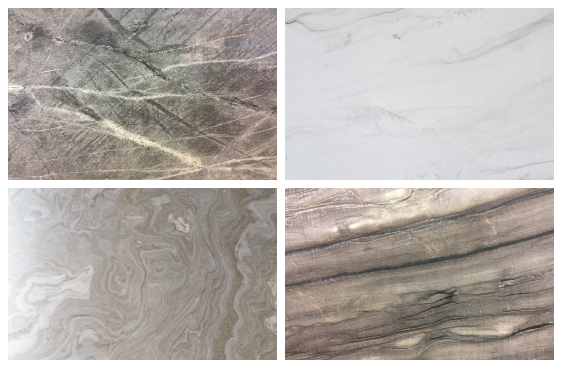Quartzite
Quartzite is formed when sandstone undergoes extreme heat and pressure through anatomical forces. Streaks may be created in the stone when the temperature changes or pressure occurs while the quartzite is still being formed, which creates a more unique countertop with a stunning finish.

Appearance
White or grey with hints of brown and black are the more natural quartzite colors. You may find that some quartzite slabs have a pink or red hue which is created from the iron oxide. Other minerals found in the quartzite can create hues of blue, green, orange or yellow. No two slabs are exactly the same.
Durability
Quartzite is resistant to harsh chemicals, sudden temperature changes and extremely hard, it has been given a reading of seven out of ten on the Mohs Hardness test. It must be cut with diamond blades whenever necessary, which means it is harder than glass and granite. Quartzite can withstand extreme temperatures up to 1650°F without cracking.
Maintenance
Daily Maintenance
- Use a ph neutral cleanser and a soft cloth
- Wipe the top down regularly
- Blot spills up immediately
- Dry any spilled liquids with a dishcloth
- Use coasters under cups or liquid-filled pots
Deep Cleaning and Disinfecting
- Use baking soda and water on oil marks
- Use baking soda and peroxide on water-based marks
- Disinfect with water and denatured alcohol